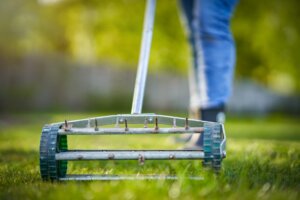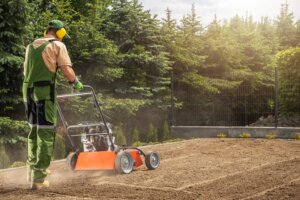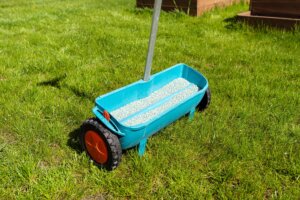Applying fertilizer the right way can make all the difference between a thriving lawn and one that struggles to grow. This guide breaks down the best fertilizer application methods for Pennsylvania’s unique soils and growing conditions.
Key Takeaways:
- Choose the right fertilizer application method for your soil type, such as granular, liquid, or foliar, to ensure efficient nutrient uptake and stronger plant growth.
- Always perform a soil test before applying fertilizer to identify nutrient needs and prevent over-application.
- Use row, band, or broadcast methods for larger areas, and fertigation or foliar feeding for quick and targeted nutrient delivery.
- Apply fertilizers carefully to avoid nutrient runoff, plant burn, and soil imbalance, especially in Pennsylvania’s varied soil conditions.
Understanding Fertilizer Application
Fertilizer application is the process of adding essential nutrients to the soil to boost plant growth and maintain soil health. The right application method depends on factors such as soil type, crop demand, and the type of fertilizer, whether organic, inorganic, granular, or liquid.
Before applying any fertilizer, performing a soil test helps determine which nutrients your lawn or crops actually need. This prevents too much fertilizer, which can harm roots, promote weed growth, and lead to nutrient runoff.
In Pennsylvania, where soils can range from sandy to clay-heavy, choosing the right application method is key to achieving consistent nutrient delivery and reducing leaching. Notably, Pennsylvania fertilizer regulations restrict nitrogen and phosphorus application after December 15 and before March 1, or when the ground is frozen or snow-covered, helping to prevent nutrient runoff and protect water quality.
Dry Fertilizer Application
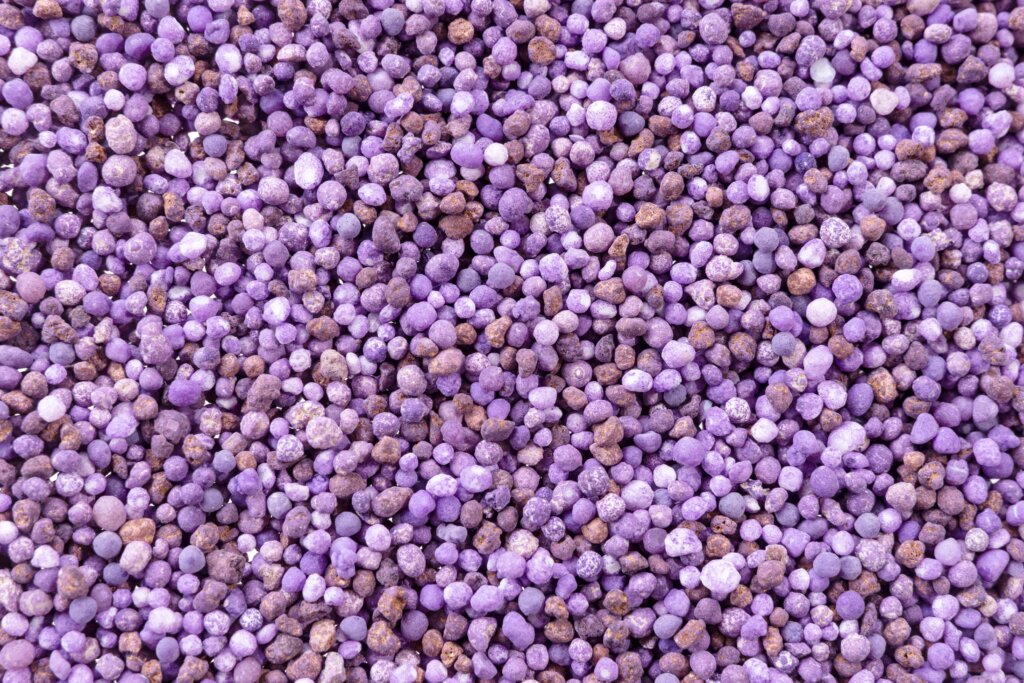
Dry or pelletized fertilizers, often granular fertilizers, are among the most common. They are easy to apply and ideal for heavy or clay soils, as nutrients are released gradually near the root zone.
One example is anhydrous ammonia, a nitrogen fertilizer that must be injected below the soil surface to prevent evaporation. This technique keeps nutrients within the moist soil layer, making them more accessible to plant roots during dry conditions.
For homeowners and growers in Pennsylvania, especially those in the Terra Lawn Care service area, this method supports efficient nutrient use and long-term soil health.
Applying Liquid Fertilizers
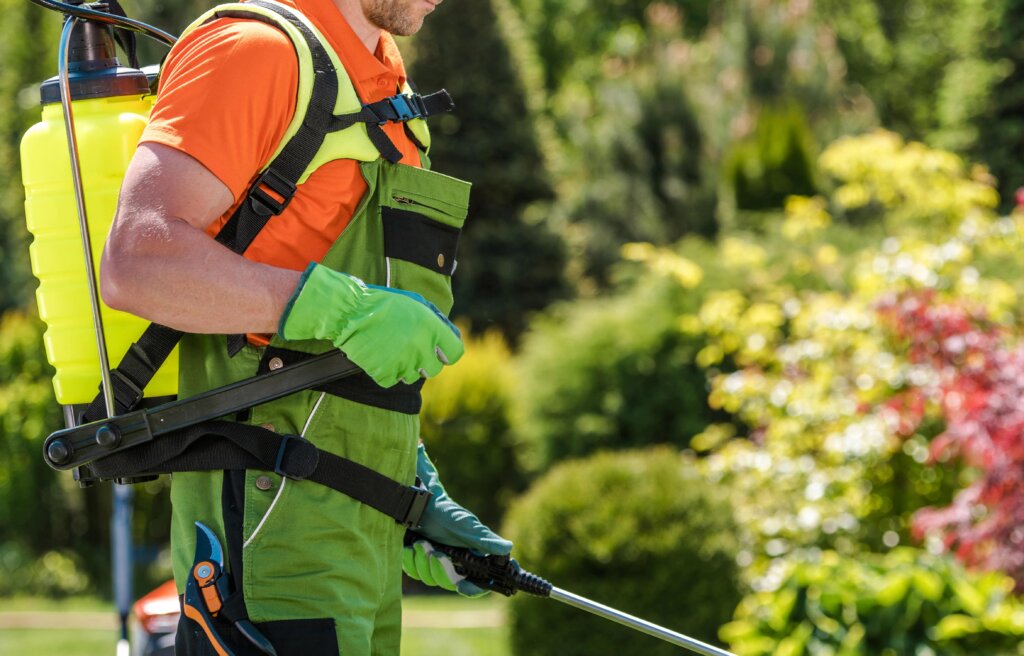
Liquid fertilizers provide nutrients in a soluble form that plants can absorb quickly. These are often water-soluble fertilizers used through fertigation, where irrigation water carries nutrients to the soil.
Fertigation Through Irrigation Systems
Using drip irrigation or sprinkler systems allows precise nutrient delivery directly to the root zone. It’s one of the most efficient fertilizer application methods, minimizing waste and improving nutrient use efficiency. Learn more about efficient watering in this blog: Should You Water Your Lawn After Fertilizing?.
Advantages and Cautions
Applying liquid fertilizers promotes rapid nutrient uptake, but it requires careful monitoring to avoid over-fertilization, which may damage young plants or disrupt soil balance.
Common Methods of Fertilizer Application
Row Application
- Fertilizer is applied along the seed row or between plant rows.
- Places nutrients near the plant roots for efficient uptake and faster plant growth.
- Commonly used for row crops like corn and sugarcane in well-prepared, irrigated fields.
Band or Side-Dressing Application
- Fertilizer is placed in narrow bands beside or below the seed, also known as side dressing.
- Ideal for nitrogen and phosphorus fertilizers to target root zones directly.
- Reduces nutrient loss and improves nutrient use efficiency during the growing season.
Broadcasting or Top-Dressing
- Fertilizer is spread uniformly across the entire field, either manually or with mechanical spreaders.
- Effective for soils that are highly nutrient-deficient and need even nutrient distribution.
- Should be applied carefully to avoid over-fertilization or plant burn, especially on young plants.
Other Different Methods of Fertilizer Application
Foliar Application and Foliar Feeding
- Foliar application, also called foliar feeding, involves spraying a nutrient solution directly onto plant leaves.
- Delivers immediate nutrient availability, helping correct deficiencies quickly during the growing season.
- Ensures efficient nutrient uptake by bypassing soil challenges such as pH imbalance or nutrient fixation.
- Best performed in calm, non-windy conditions to prevent leaf burn and ensure even fertilizer coverage.
Soil and Sub-Soil Placement
Different soil application techniques target nutrient delivery at varying depths, ensuring plants get the nourishment they need based on root structure and soil type.
| Soil Application | Deep and Sub-Soil Placement |
|---|---|
| Places nutrients directly into the soil surface or around the base of plants. | Fertilizers are placed beneath the plow layer to reach deep-rooted crops. |
| Ensures efficient nutrient delivery to the root zone, where it’s most needed. | Sub-soil placement effectively prevents nutrient runoff in high-clay soils common in Pennsylvania. |
| For home lawns in PA, this method improves nutrient availability and minimizes leaching in sandy soils. | Helps retain nutrients deeper in the soil, making them accessible during dry or high-runoff conditions. |
Choosing between soil and sub-soil placement depends on your soil composition and crop type; both methods enhance nutrient efficiency when applied correctly.
Starter Solutions and Young Plant Care
When working with starter solutions, fertilizer solutions used during planting, apply nutrients lightly near the seed row. This method supports early plant growth without overloading young plants.
Avoid placing fertilizer directly on seeds or leaves, as concentrated chemicals can damage delicate tissues. For best results and expert guidance on nurturing young plants, visit Terra Lawn Care.
Choosing the Right Fertilizer Application Method
Each fertilizer application method serves a specific purpose:
- Broadcasting for large areas or nutrient-deficient soils.
- Row or band placement for targeted feeding near plant roots.
- Fertigation for efficient delivery through irrigation systems.
- Foliar feeding for fast correction of nutrient deficiencies.
The right choice depends on soil structure, crop demand, and local climate. For Pennsylvania homeowners, combining a soil test with a professional assessment ensures the best outcomes. For expert guidance, visit Terra Lawn Care’s Lawn Fertilization Services.
Organic vs. Inorganic Fertilizers
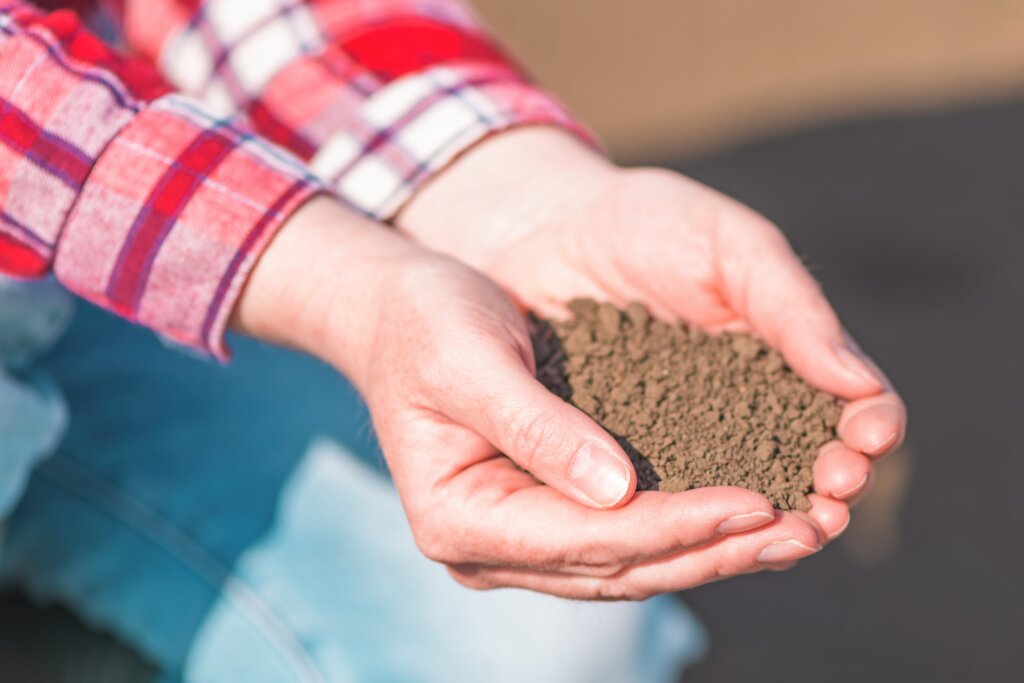
Choosing between organic and inorganic fertilizers depends on your soil condition and desired results:
| Type | Description | Best Use |
|---|---|---|
| Organic Fertilizers | Derived from natural materials (compost, manure), they release nutrients slowly and improve soil structure. | Great for long-term soil health and weed control. |
| Inorganic Fertilizers | Chemically manufactured; provides immediate essential nutrients like nitrogen and phosphorus. | Ideal for quick plant growth and nutrient correction. |
No matter which you choose, always follow the correct application method and timing. For more guidance, see How to Use Fertilizer: A Complete PA Guide.
Avoiding Too Much Fertilizer
Applying too much fertilizer can burn plant roots, cause nutrient imbalance, and lead to runoff that harms nearby water sources. Always check the fertilizer label for application rates, and never exceed the recommended amount. To prevent mistakes, read How to Apply Lawn Fertilizer to understand proper timing and preparation methods.
A Smarter Approach to Fertilization in Pennsylvania
Understanding the different methods of fertilizer application helps you make smarter, eco-friendly choices for your lawn or crops. Whether you prefer granular fertilizers, liquid fertilizers, or organic options, applying them correctly ensures lasting results.
For professional help across Pennsylvania, contact our certified team at Terra Lawn Care Specialists. We’ve been helping PA homeowners grow greener, healthier lawns since 2003—one nutrient-rich soil at a time.
Frequently Asked Questions About Methods of Fertilizer Application
Fertilizer is applied using different techniques based on the crop type, soil condition, and available equipment. The main methods include row application, surface application, and sub-soil placement. In row application, fertilizer is placed along or beside the seed row so that nutrients are close to where plants require them most.
Surface application spreads nutrients evenly over the soil, while sub-soil placement delivers them deeper for crops with strong root systems. Each method ensures proper nutrient application for healthy growing plants.
The five common methods are broadcasting, row application, band placement, fertigation, and foliar feeding. Broadcasting involves spreading fertilizer across the entire soil surface, while row application places nutrients beside or below seeds. Band placement applies fertilizer on one or both sides of plant rows for efficient uptake.
Fertigation uses irrigation systems to deliver soluble fertilizers, and foliar feeding sprays nutrients directly onto leaves. These different techniques provide flexible options depending on soil type, specialized equipment, and crop needs.
The four R’s stand for Right Source, Right Rate, Right Time, and Right Place. This simple framework helps ensure the application of fertilizer is both effective and environmentally safe. Using the right equipment and method, such as surface application or fertigation, helps deliver nutrients precisely when and where plants require them. Following the 4R principles reduces waste, saves costs, and promotes sustainable soil management for all types of crops.
Three key best practices include performing a soil test before fertilizing, selecting suitable fertilizers, and using the proper equipment for even coverage. Soil testing helps identify which nutrients plants require, especially key ones like nitrogen, phosphorus, and potassium.
Choosing high-nutrient or soluble fertilizers depends on your process and crop goals. Finally, using the right equipment—from sprayers to spreaders—ensures even nutrient application, helping your growing plants thrive while minimizing runoff and waste.

